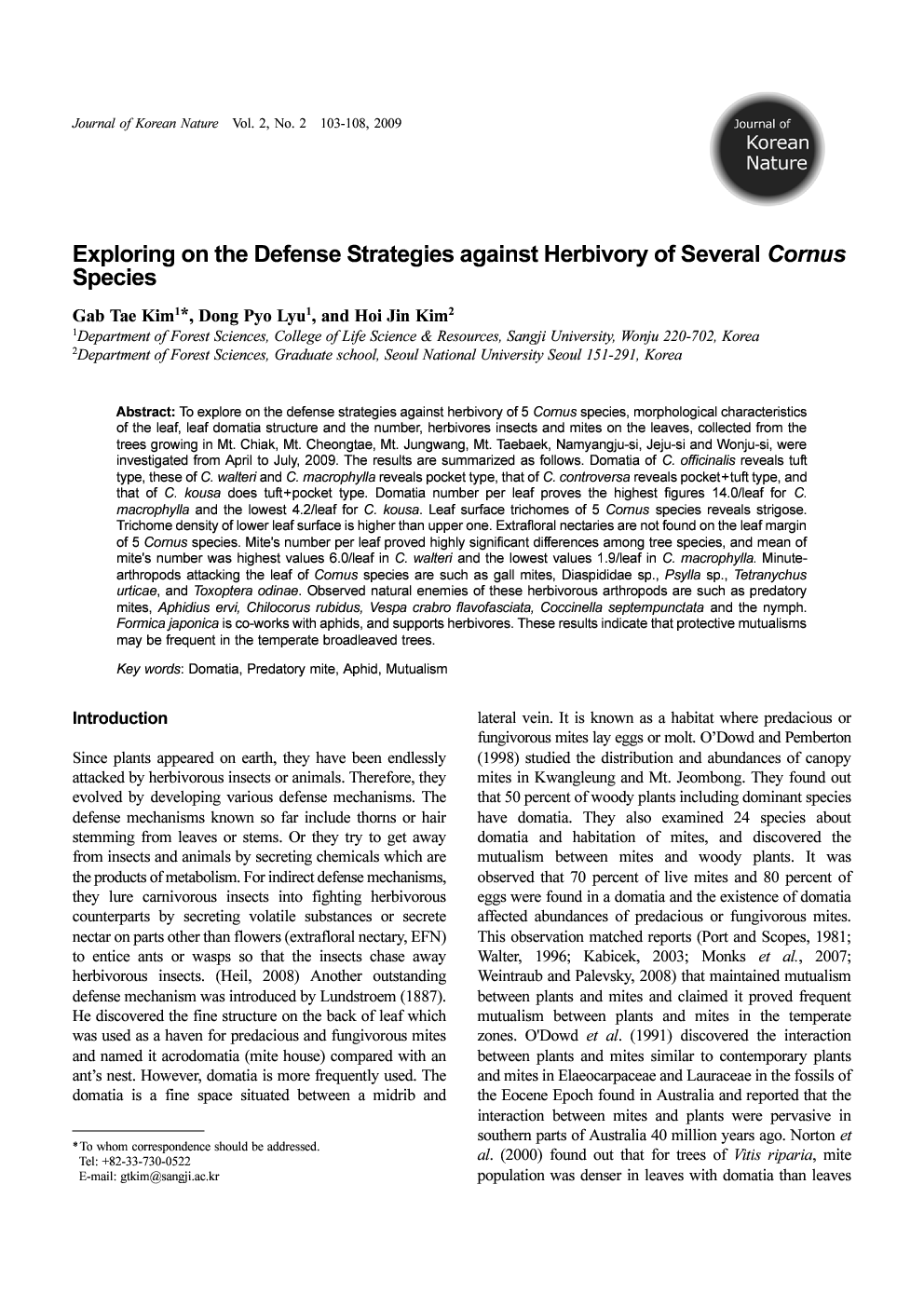| Article ID | Journal | Published Year | Pages | File Type |
|---|---|---|---|---|
| 4399586 | Journal of Korean Nature | 2009 | 6 Pages |
To explore on the defense strategies against herbivory of 5 Cornus species, morphological characteristics of the leaf, leaf domatia structure and the number, herbivores insects and mites on the leaves, collected from the trees growing in Mt. Chiak, Mt. Cheongtae, Mt. Jungwang, Mt. Taebaek, Namyangju-si, Jeju-si and Wonju-si, were investigated from April to July, 2009. The results are summarized as follows. Domatia of C. officinalis reveals tuft type, these of C. walteri and C. macrophylla reveals pocket type, that of C. controversa reveals pocket+tuft type, and that of C. kousa does tuft+pocket type. Domatia number per leaf proves the highest figures 14.0/leaf for C. macrophylla and the lowest 4.2/leaf for C. kousa. Leaf surface trichomes of 5 Cornus species reveals strigose. Trichome density of lower leaf surface is higher than upper one. Extrafloral nectaries are not found on the leaf margin of 5 Cornus species. Mite's number per leaf proved highly significant differences among tree species, and mean of mite's number was highest values 6.0/leaf in C. walteri and the lowest values 1.9/leaf in C. macrophylla. Minute-arthropods attacking the leaf of Cornus species are such as gall mites, Diaspididae sp., Psylla sp., Tetranychus urticae, and Toxoptera odinae. Observed natural enemies of these herbivorous arthropods are such as predatory mites, Aphidius ervi, Chilocorus rubidus, Vespa crabro flavofasciata, Coccinella septempunctata and the nymph. Formica japonica is co-works with aphids, and supports herbivores. These results indicate that protective mutualisms may be frequent in the temperate broadleaved trees.
